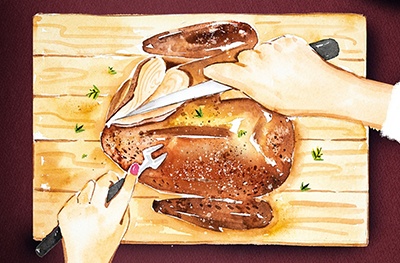


Here's everything you need to know about preparing and roasting a turkey, how to carve it and a fail-safe time plan for the hosts preparing and serving a fabulous festive feast.


Preparing the turkey
Prep in advance
Take your turkey out of the fridge about 30 minutes before preparing, to bring it up to room temperature. Before cooking, remove the wishbone to make carving easier later.
Use up the giblets
Every Waitrose whole turkey comes with giblets. Remove these before cooking but don’t throw away – they make fantastic turkey stock to make your own gravy.
Stuffing the turkey
If stuffing with traditional sausage meat or similar, carefully fill the neck cavity, taking care not to tear the skin. Use a couple of cocktail sticks to secure any loose skin when finished. Remember to weigh the raw turkey after it’s been stuffed for accurate cooking times.
You can also stuff the turkey cavity with flavour – bay leaves, herbs, citrus fruit, and onion. As the bird roasts, these will soften and release plenty of steam to keep it moist.

How to joint a turkey
If oven space is tight, or your recipe calls for you to joint the turkey, follow our step-by-step guide.
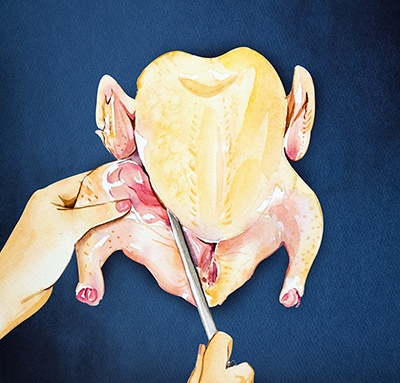
1. Sit the turkey breast-side up on a board and cut through the skin between the thigh and body. Pull back the leg and use a bit of force to pop open the leg joint. Cut between the joint and remove the leg. Repeat on the other side.
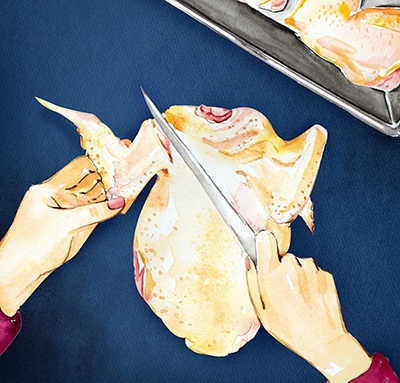
2. Turn the turkey over so it sits breast-side down and locate the wing joint at the front of the breast. Pull back the wing to pop open the joint, then cut between the body and wing to remove it. Repeat for the other wing.
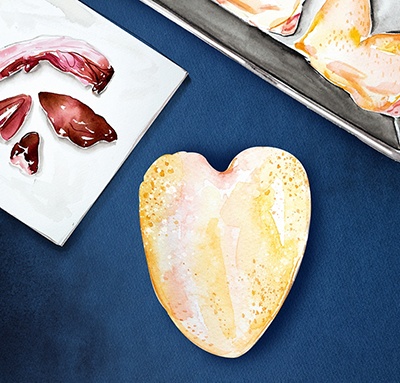
3. Trim off the excess skin and fat from the end of the crown, along the base of the breast bone. You should now have 2 legs and a trimmed crown (on the bone), plus wings and giblets for stock.
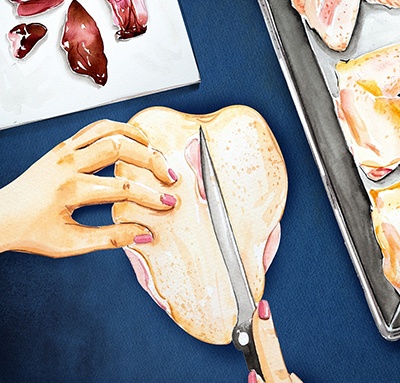
4. Closely run your knife along the breast bone to separate the breast meat from the carcass, then repeat, making small strokes with the knife to release the breast. This will give you 2 breasts in addition to the rest of the cuts.

Get ahead with your accompaniments
Why not make them in advance and freeze until you need them? Find tips below, as well as our easy-to-prepare recipes for Christmas stuffing, sauces and sides. Or if you're really pushed for time, check out our ready-made selection of sides.

Cooking the turkey
1. Covering the bird
Place the turkey in a roasting tin. For golden, crispy skin, brush all over with melted butter. Cover with a large sheet of foil and secure around the rim of the tin to trap the steam and keep the bird moist. It's now ready for the oven.
2. Turkey cooking temperature
It's best to follow the turkey’s cooking instructions, but as a general rule, cook in a 180°C (160°C fan, gas mark 4) preheated oven for 35 minutes per kilo (including stuffing).
About 15 minutes before the end of its cooking time, remove the foil to help the skin crisp.
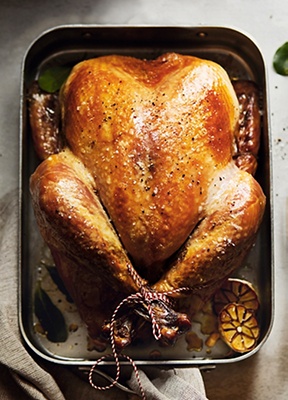
3. Testing your turkey is fully cooked
To test if a turkey is cooked, insert a small skewer into the thickest part of the thigh and see if the juices run clear. If there’s any pinkness, return to the oven and check every 15 minutes. Or, if using a meat thermometer, the internal temperature needs to read 70°C when inserted into the thickest part of the meat.
4. Turkey resting time
This is very important to allow the meat to relax, stay tender and retain its juices. Cover with buttered aluminium foil and a tea towel, then leave to rest for a minimum of 30 minutes up to the advised 90 minutes before carving. Don’t worry about the turkey going cold as it will stay warm enough when covered, and will still eat perfectly when served with piping hot gravy.

Carving the turkey
Once the bird is well rested, follow our simple carving guide to get the most out of your Christmas turkey. You'll need a sharp, long-bladed carving knife for the best results.

Christmas lunch timeplan
In charge of cooking the turkey this year? Follow our simple guide with step-by-step instructions for getting your feast on the table in time for lunch. These timings are based on a 4kg whole turkey to serve 6-8 people at approximately 2pm.
9:30am
Preheat oven to 180°C (160°C fan, gas mark 4).
Take turkey out of the fridge and add stuffing, if using.
10:00am
Weigh turkey to calculate your exact cooking time.
10:15am
Cover turkey loosely with foil and put in the oven, breast-side down.
11:50am
Remove the foil from the turkey and turn it over to brown the skin.
Baste with the juices. Put back in oven.
12:50pm
Check if turkey is cooked, then remove turkey from the oven and transfer to a large board or plate. Cover tightly with foil and tea towels to keep warm.
Increase oven temperature to 200°C (180°C fan, gas mark 6).
Preheat fat for potatoes in oven. Parboil potatoes.
1.00pm
Toss potatoes in the hot fat and put in oven on the top shelf.
Make gravy, if not already done.
1.15pm
Put carrots and parsnips in the oven to roast.
Serve starter, if having.
1.25pm
Put pigs in blankets and stuffing in the oven.
1.40pm
Reheat ready-made red cabbage.
1.50pm
Cook Brussels sprouts.
Reheat gravy, adding the turkey juices from the tin.
Heat up bread sauce.
Transfer sides and sauces to serving dishes.
2.00pm
Take turkey and all the trimmings to the table and enjoy your fabulous feast.
Leftover turkey?
Use up your turkey leftovers and other surplus Christmas foods with these simple recipes.
Image illustration credit: Enya Todd IllustrationX Waitrose Weekend



